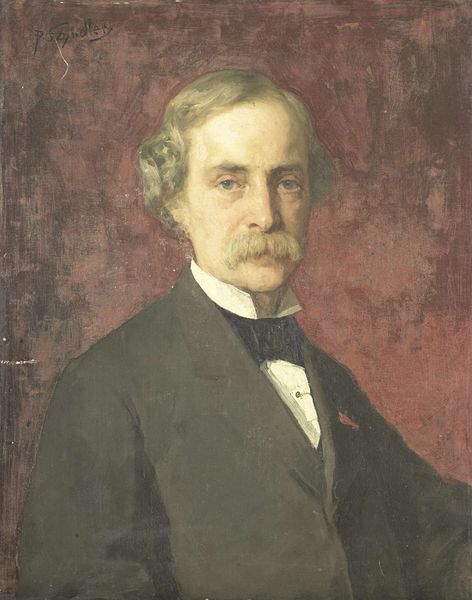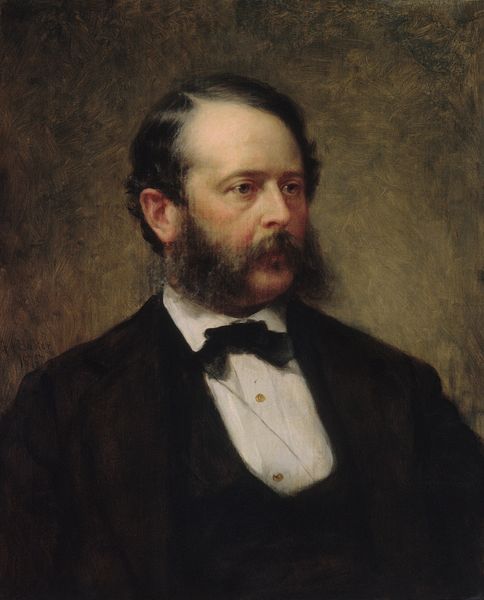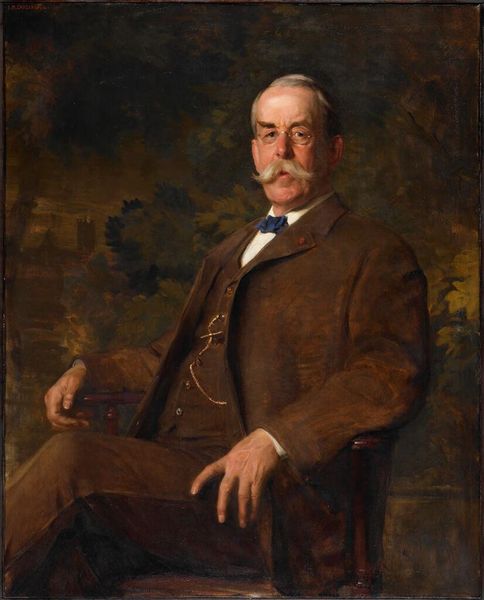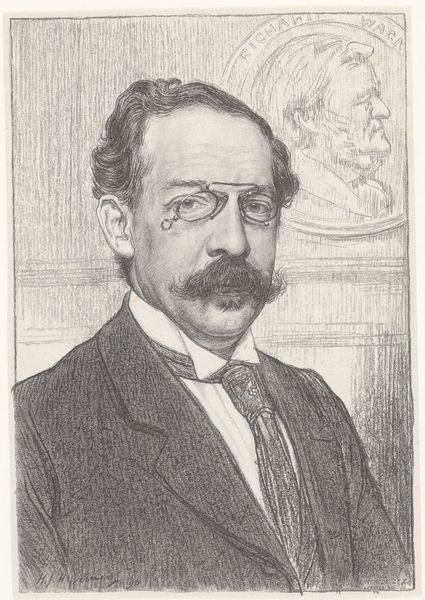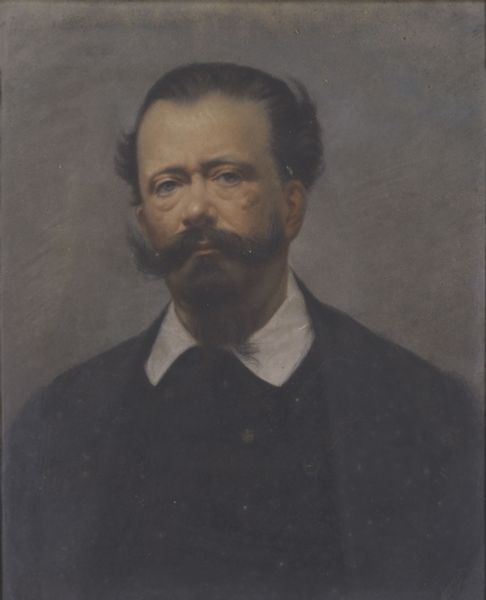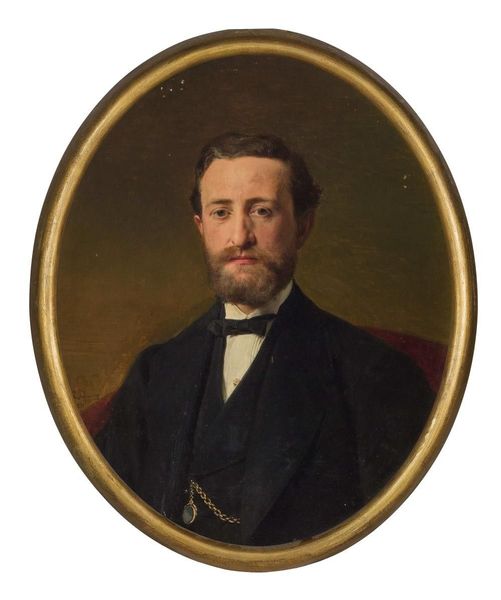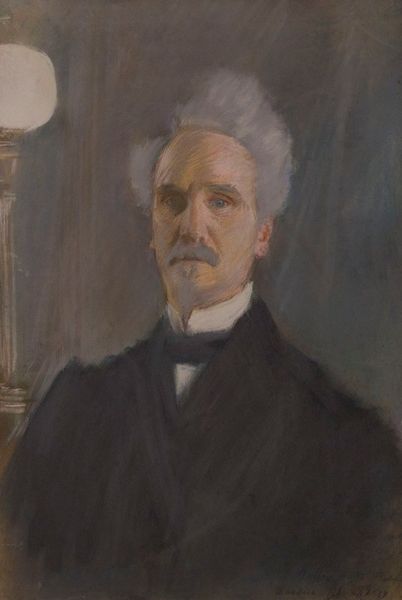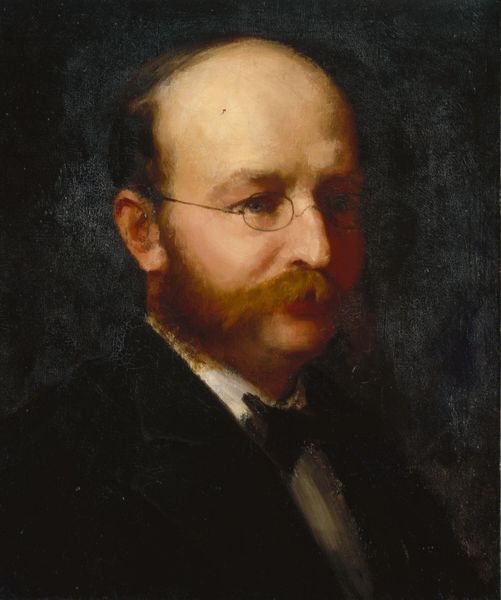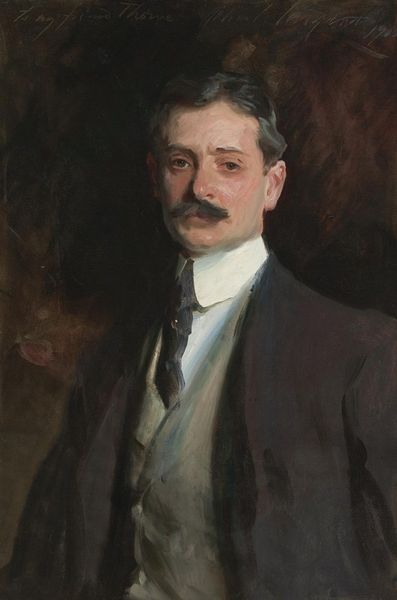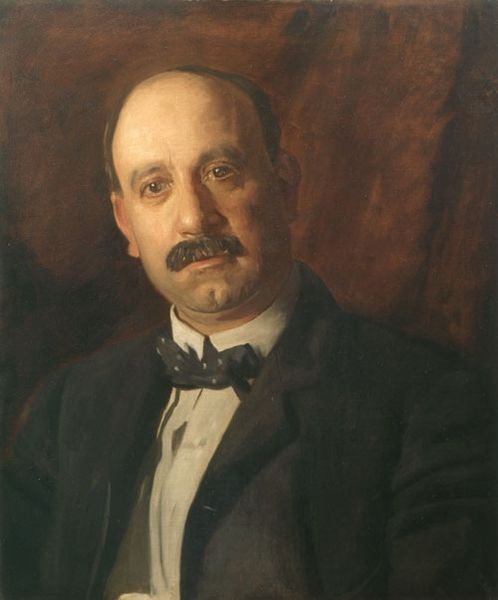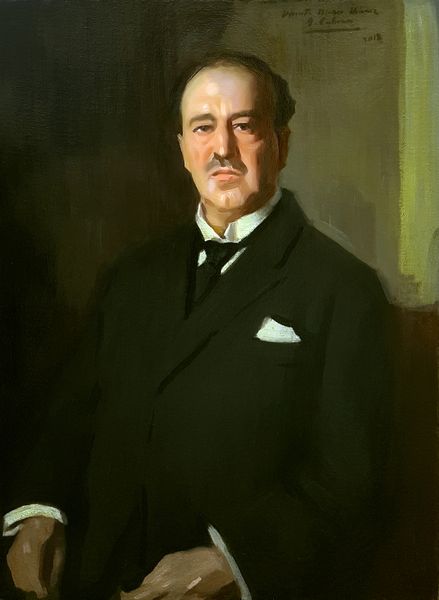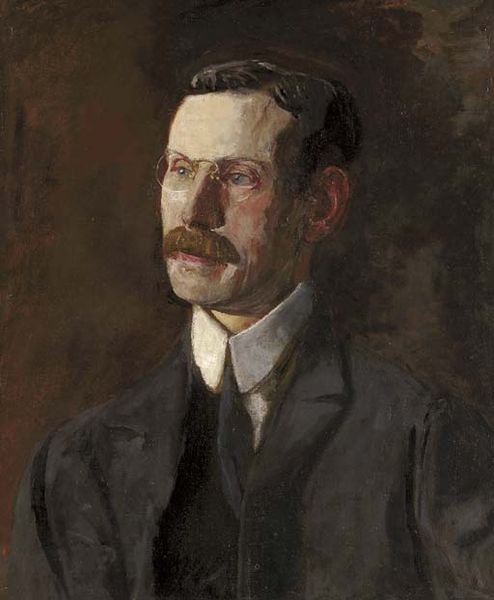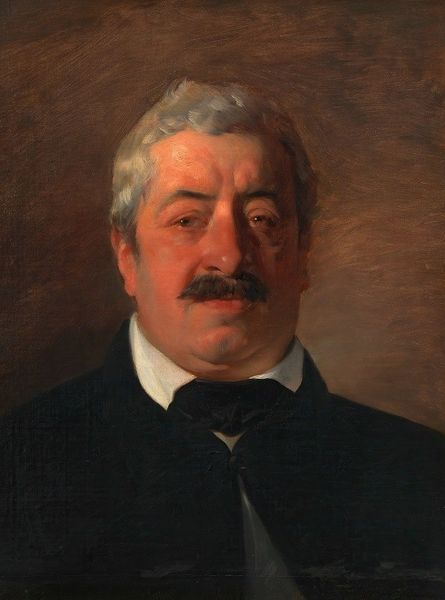
Copyright: Public Domain: Artvee
Curator: Take a look at Thomas Eakins's "Portrait of Samuel Myers," created in 1904 using oil on canvas. Editor: It's immediately striking, isn't it? There's a real intensity in the sitter's gaze, despite the muted color palette. It evokes a feeling of quiet contemplation, or maybe even melancholy. Curator: Eakins was fascinated by realism and the science of observation. One must consider the detailed way in which the materials come together here. Notice the handling of light across the face and how it defines form, the visible brushstrokes, suggesting a rapid working process and the materiality of paint itself. Editor: Indeed, the almost photographic quality makes it compelling, but let's think about Samuel Myers within his social context. He was a prominent member of Philadelphia's Jewish community, and this portrait serves as a marker of identity and belonging. Eakins’ work often intersected with diverse communities, reflecting a broader cultural narrative about inclusion and representation. Curator: Yes, but there is a dialogue, I think, that we can pursue between the artist's hand and the final product. Think of the underpainting barely concealed in areas like the background, and the conscious application of pigment to describe not only likeness but texture, status and, maybe a little bit of ego? These are all products of the physical act of creation. Editor: Absolutely. Also, the choice of clothing, the cut of his suit, and even his spectacles reflect his professional status. The portrait captures a moment in time, preserving a certain representation of identity in the early 20th century. The painting tells a story far beyond the aesthetic; it reflects cultural dynamics. Curator: Perhaps what truly lingers is the tension between intention and accident, what emerges from the working process—how those applications of paint ultimately construct an idea that the viewer ultimately interacts with, whether or not they are thinking about those other elements of identity. Editor: Precisely. By positioning the portrait within these broader narratives, we gain a deeper appreciation for its role in reflecting—and shaping—social consciousness. Curator: A potent reminder that artistic choices reflect—and are constrained by—material reality. Editor: And it allows us to examine its resonance today. Thank you.
Comments
No comments
Be the first to comment and join the conversation on the ultimate creative platform.
